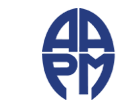| Question 1: The microstructures that influence our interactions with other people:
|
| Reference: | The Surprising Power of Liberating Structures: Simple Rules to Unleash A Culture of Innovation Henri Lipmanowicz, Keith McCandless (Liberating Structures Press: 2014)
|
| Choice A: | Organize routine interactions. |
| Choice B: | Guide and control how groups work together. |
| Choice C: | Enable and constrain what is possible. |
| Choice D: | All of the above. |
| Question 2: Conventional structures are used to organize how people routinely work together stifle inclusion and engagement:
|
| Reference: | The Surprising Power of Liberating Structures: Simple Rules to Unleash A Culture of Innovation Henri Lipmanowicz, Keith McCandless (Liberating Structures Press: 2014)
|
| Choice A: | True. |
| Choice B: | False. |
| Question 3: Polarity Management increases in value as the system or issue: |
| Reference: | Polarity Management: Identifying and Managing Unsolvable Problems
Barry Johnson (HBR Press: 2014)
|
| Choice A: | Increases in complexity. |
| Choice B: | Decreases in number of employees. |
| Choice C: | Increases in market share. |
| Choice D: | Increases in resistance to change. |
| Choice E: | A and D. |
| Question 4: Polarities have 2 or more right answers that are interdependent:
|
| Reference: | Polarity Management: Identifying and Managing Unsolvable Problems
Barry Johnson (HBR Press: 2014) |
| Choice A: | True. |
| Choice B: | False. |
| Question 5: The Definition of polarity management consists of these elements:
|
| Reference: | Polarity Management: Identifying and Managing Unsolvable Problems
Barry Johnson (HBR Press: 2014)
|
| Choice A: | 2 or more right answers. |
| Choice B: | Interdependence. |
| Choice C: | Energy flow. |
| Choice D: | Personality preference. |
| Choice E: | A, B & C. |
| Question 6: Which of the following is not a polarity?
|
| Reference: | Polarity Management: Identifying and Managing Unsolvable Problems
Barry Johnson (HBR Press: 2014)
|
| Choice A: | Part and whole. |
| Choice B: | Cost and quality. |
| Choice C: | Strategic and operational. |
| Choice D: | Hiring person A or B. |
| Choice E: | Inhale and exhale. |
| Question 7: Upwards of 70% of change efforts fail: |
| Reference: | Tipping the Balance: Overcoming persistent problems in organizational change; Research in Organizational Change and Development, 19, 259-292.
|
| Choice A: | True. |
| Choice B: | False. |
| Question 8: Successful change agents don’t work to prevent these reactions but rather to make them discussable: |
| Reference: | Tipping the Balance: Overcoming persistent problems in organizational change; Research in Organizational Change and Development, 19, 259-292.
|
| Choice A: | Politics. |
| Choice B: | Emotions. |
| Choice C: | Inspiration. |
| Choice D: | Mindsets. |
| Choice E: | All of the above. |
| Question 9: If the structural, technical and financial changes go well, the human changes will take care of themselves. |
| Reference: | Managing Transitions: Making the Most of Change (Da Capo Lifelong Books, 2009)
|
| Choice A: | True. |
| Choice B: | False. |
| Question 10: Change and transition are often confusing; therefore, leaders should refrain from having conversations until clarity is certain.
|
| Reference: | Tipping the Balance: Overcoming persistent problems in organizational change; Research in Organizational Change and Development, 19, 259-292.
|
| Choice A: | True. |
| Choice B: | False. |
